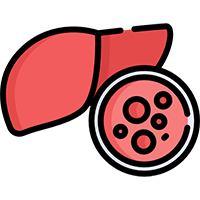Head and Neck Cancers
Head and neck cancers refer to a group of cancers that develop in the tissues of the head and neck region, including the mouth, throat, nasal cavity, sinuses, larynx (voice box), and salivary glands. These cancers can originate from various types of cells, including squamous cells (the flat cells lining the inside of these areas), glandular cells, or other types of cells.
Risk factors for head and neck cancers include tobacco use (including smoking and smokeless tobacco), excessive alcohol consumption, human papillomavirus (HPV) infection, exposure to certain chemicals or toxins, poor oral hygiene, and certain dietary factors.
Symptoms of head and neck cancers can vary depending on the location and stage of the cancer but may include
Persistent sore throat
Difficulty swallowing (dysphagia)
Changes in voice or hoarseness
Lump or mass in the neck
Persistent ear pain
Persistent mouth ulcers or sores
Chronic sinus infections that do not respond to treatment
Unexplained weight loss
Swelling or pain in the face or mouth
Diagnosis typically involves a physical examination, imaging tests such as CT scans or MRIs, and biopsy of the suspected tumor. Treatment options for head and neck cancers depend on factors such as the type, location, stage, and extent of the cancer, as well as the patient's overall health and preferences. Treatment may include surgery, radiation therapy, chemotherapy, targeted therapy, or a combination of these approaches.
Prognosis for head and neck cancers varies depending on factors such as the stage of the cancer, its location, the patient's overall health, and how well they respond to treatment. Early detection and treatment can improve outcomes and quality of life for patients with head and neck cancers. Additionally, advances in treatment options and supportive care continue to improve survival rates and quality of life for people diagnosed with these cancers.














